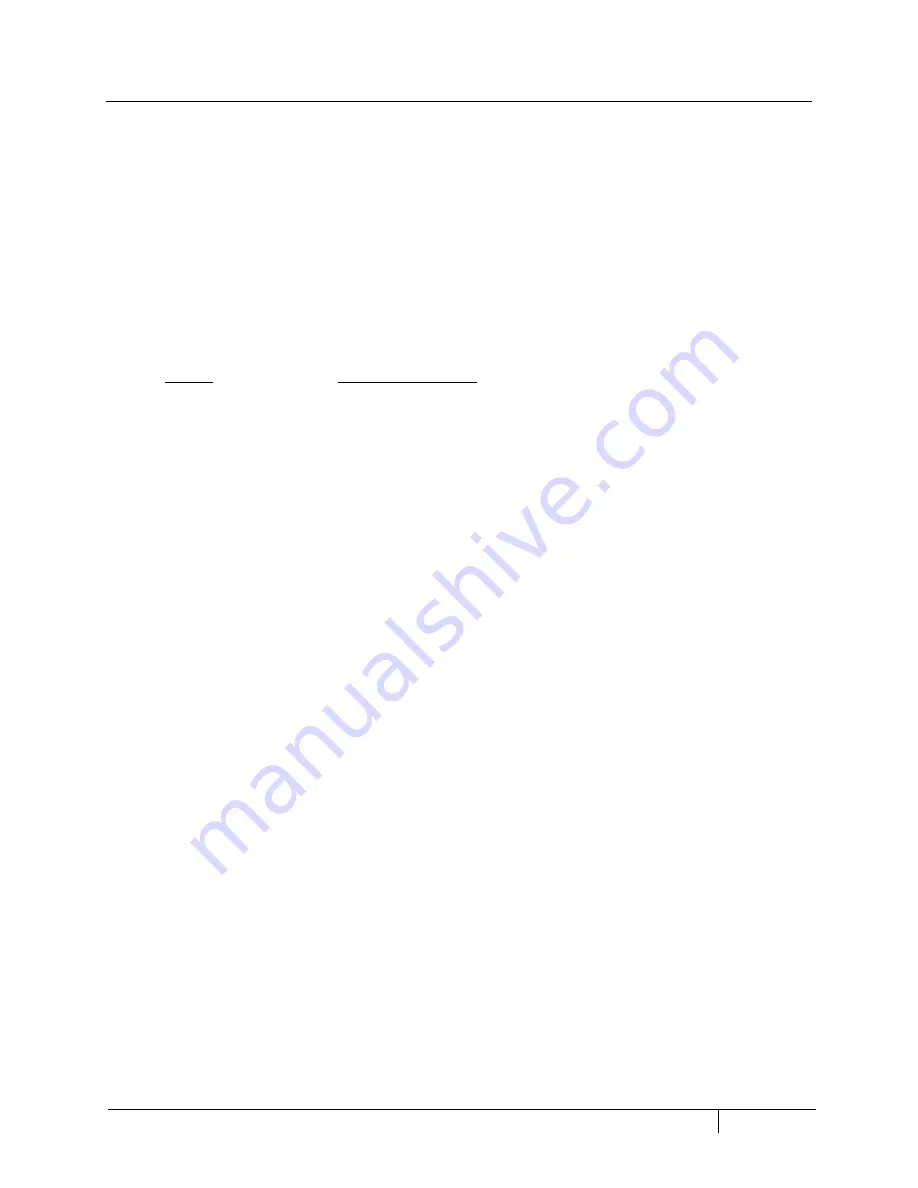
High Speed Length Controllers Instruction Manual
Model: 315D | 322D
© Aurora Scientific, 2020 VER. 1.00
page 9
4
Calibration, Instrument Tuning and Maintenance
4.1
Calibrating Length Out
To calculate the output scale factor of LENGTH OUT the user must cause the arm to move a known
amount and compare this value with the voltage measured at LENGTH OUT. One method of achieving
this is the following.
1)
Apply a 10-volt peak-to-peak square wave to LENGTH IN at 75Hz
2)
Using a finely divided ruler, measure the deflection at the tip of the lever arm as it moves back
and forth. The amount of movement should be close to that shown in the table below. Record
the actual movement.
System
Peak-to-peak motion
315D
1.5 mm
322D
3.0 mm
3)
Using an oscilloscope measure the peak-to-peak voltage at LENGTH OUT.
4)
Calculate the length scale factor as follows.
Length Scale Factor = actual movement measured / LENGTH OUT voltage
Example: For a model 315D system the actual movement is measured as 1.5 mm and LENGTH
OUT is measured as 9.92 volts. Therefore, the Length Scale Factor will be 1.50 mm/9.92 volts =
0.151 mm/volt.
Ensure that a non-contact method of measuring the length is used. Touching a micrometer or other non-
compliant instrument to the lever arm will often cause the arm to oscillate.
Alternate methods of measuring the movement include using an optical reticule or a traveling stage
microscope. Another method of calibrating the length would be to simply use the LENGTH OFFSET
control on the front panel of the instrument. In this case the user would set the offset control near one
end of the range of motion, use a voltmeter to measure the voltage at LENGTH OUT and mark the
position of the lever arm tip. Then set the offset control to a point near the other end of the range of
motion and once again record the LENGTH OUT voltage. Mark the final position of the lever arm and
then measure the distance between the marks. Use this information to calculate the scale factor. By
mounting a finely divided ruler behind the lever arm the LENGTH OFFSET control can be adjusted such
that the lever tip lines up with a division on the ruler. Then move the offset control until the tip lines up
with another division. This eliminates the need to mark the positions and then measure them.







































